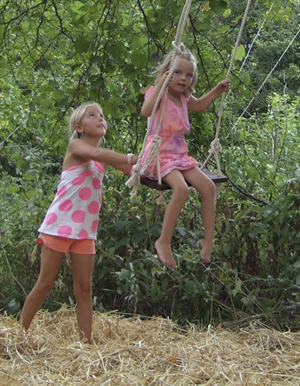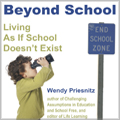 |
Many of us feel that our lives are more complex, fragmented, and busy than we would like. We may feel a desire for more connection with our children, our friends, our neighbors, ourselves, and Nature. But, like Alice in Wonderland, we’ve learned that “We must run as fast as we can, just to stay in place. And if you wish to go anywhere you must run twice as fast as that.” This often translates to working harder and longer, scheduling more meetings and activities, and sleeping less. Stress, overeating, divorce, fighting, and anxiety become our reality. We may wonder what we’ve done wrong and vow to try harder and run faster. Exhausted yet? What If There Is Another Way? Simple living is another way. From Buddhist monks to back-to- the-land hippies, simple living has had fans and converts since the beginning of humanity. But it’s not just for people on the fringe of society. Simple living can apply to you in exactly the life you are living right now. You start where you are, adopt a couple of ideas, and suddenly you start seeing new possibilities in your life that you’ve never seen before. It’s exciting, fun, and life-changing. You can do it alone and it’s great to do it with friends and family. What Is Simple Living? One way of thinking about simple living is as a voluntary choice to consume less, thereby freeing you to do more of what you want to do with your time, money, and life energy. By consuming less, you are gentler on the environment, asking for less stuff to be made, needing less space to store it in, and adding less waste to landfills and the oceans. You become more self-sufficient. You free yourself to get off, or at least slow down on, the treadmill of working to earn money in order to buy things. Simple living principles ask each of us to consider what we truly need and to find ways other than purchasing something from someone else to meet those needs. Simple living says that you don’t need as much money or things as is common in the Western so-called developed world. It also says that with six billion people on the planet, each of us would do well to consider what will happen if everyone consumes at the rate that you and I do. Is that sustainable? For how long? Simple living creates more space in your life to ask the questions that are important to you. It also helps you have more time and energy to listen within yourself for the answers. Is Simple Living Good for Kids? The benefit of having parents who are more present, relaxed, and happy cannot be overstated. Most parents I work with say they are more likely to yell, punish then regret it, or in other ways lose it with their children when they feel the pressure to do more, be somewhere else, or go faster. When parents prioritize living simply, they are less likely to be anxious, stressed, and overextended. The increased sense of well-being this produces is of wonderful benefit to children. More connection with Nature helps increase kids’ sense of belonging and safety in the world. When entertainment is playing in sand, dirt, and water, children learn that it’s okay to get dirty. This is invaluable and helps create a sense of trust in their own bodies and in the earth that supports them. Running around in the woods, looking at bugs, and getting wet in a rain storm are all great things for kids to experience. Kids benefit from the reduction in stress and the greater connection to the natural world that simple living often allows. The world is a tangible place. Kids are body-based and need to experience through their five senses. It helps them know they have a place and that they belong. When life occurs through watching a screen, it is a vicarious experience and it is easy to believe that life is happening to other people but that you’re not a fully participatory member. That’s a hard thing to overcome later in life. Kids need to learn that it’s okay to try and fail. Life does not come with a save/reboot feature. We make mistakes, learn from them, and learn how to recover. “I’m sorry” is not good enough. Nature, gardening, climbing trees, playing with, and working with others gives us nearly endless chances to both do well and mess up, then apply what we learn and try again. Living more simply often allows children more time in one place, closer connection to the natural world, and less distraction from television, Internet, and other vicarious experiences. This helps them know that their lives are places they belong and that matter. Preparing, tending, and harvesting a garden are some simple ways to help kids have a sense of self and a sense of place. Let’s look at a few more ways to simplify life, save money, and have fun. Simple Kids Kids like to play, be seen, explore their world, learn their place in it, and feel powerful, safe, and confident. The transition from screen time entertainment to real world entertainment can be a hard one. Life is messier, harder, and more prone to error when you’re in your body rather than moving pixels on a screen. Here are some easy starting points:
Simple Entertainment We are used to consuming entertainment rather than creating our own. Want to shift that? Here are some ideas to get you started:
Simple Food Food is more than just calories and flavors. It matters what you eat, where it comes from, and how it’s prepared. When you simplify food it tends to be better for you, for the planet, for your local economy and farmers, for your soul, and for your family. What are you waiting for? Grow what you can. Start where you are. If you’ve never grown anything, start small. Here are a few more ideas:
Simple Travel Travel is a big part of each person’s carbon footprint and a contributor to global warming. Cars are expensive to buy and to care for. They ask our governments to build and maintain roads and highways that are also expensive. Traveling less and by more sustainable means are great ways to simplify your life. Here are a few ideas to get you started:
Noticing is a huge part of change. When we become aware of our actual experience and of the experience we’d like to be having, we become empowered to stop doing things we don’t want and to start creating the life we want to live. Remember, it’s your life...and your children’s. No one else’s. What makes you happy? Simple living starts right now, right where you are. What simple thing can you do right now to create more connection with your family, yourself, and your world? Kassandra Brown has embraced simple living by moving to Dancing Rabbit Ecovillage in rural Missouri where she works from her 200-square-foot home as an online coach at www.parentcoaching.org.
| |






